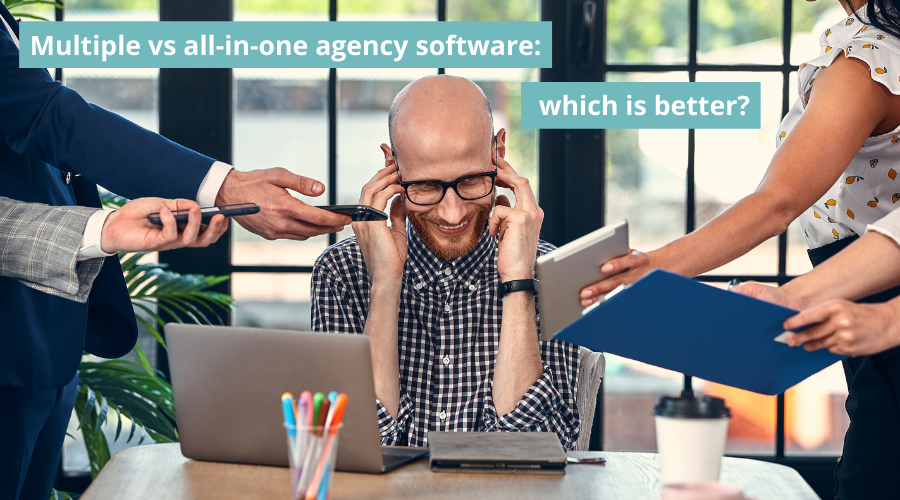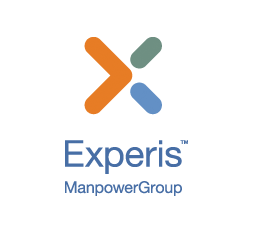
There are a multitude of things to manage in day-to-day agency life. From projects, pipelines and clients to resource, capacity and financials. It’s the classic juggling act and there’s a fine line between being a top performer and dropping the ball.
One of the questions agencies often find themselves asking is: what are the best systems to help them manage all these aspects? And, crucially, is it better to use multiple best-in-class systems, or can one system consolidate everything?
Here, we’ll explore what agencies need to automate for efficient operations and the pros and cons of an all-in-one agency management system versus multiple tools.
First of all, you might be asking yourself if you even need a system or systems. If you’re a small agency, you might be managing relatively well using spreadsheets and maybe a couple of apps. And passing information on to each other as and when.
But as you start to grow, this can become more and more difficult and it becomes clear that data stored mainly in people’s heads isn’t going to take you places.
So, what management software might an agency need?
- Job financial management software (aka job costing software). This can help with:
- Estimating time and costs
- Creating client quotes
- Capturing job purchases and expenses
- Tracking time and costs against budgets
- Invoicing
- Project and client profit reporting
- Project management software. These tools can support:
- Planning project timelines
- Allocating tasks
- Briefing jobs and sharing documents
- Project communications
- Tracking project progress
- Project reporting
- CRM and sales software. These are used for:
- Capturing contact data and history
- Nurturing leads
- Managing opportunities and activities
- Forecasting sales pipeline
- Tracking targets
- Resource management software. These enable you to:
- Schedule resources
- Monitor availability and workloads
- Bookout holiday and absence
- Report utilisation
- Management information software. Use these for:
- Forecasting revenue, profit, billing and costs
- Monitoring forecasts vs actuals
- Capacity forecasting
- Staff utilisation and recovery reporting
- Profit analysis
- Target tracking
- Revenue recognition
- Accounting software (such as Xero, Quickbooks). These help agencies with:
- Recording income and expenses
- Tracking payments
- Payroll and dividends
- Reconciling bank transactions
- Calculating tax and VAT
- Financial reporting and year-end accounting
That’s an awful lot of categories, all with their own numerous processes to consider. And there are systems and software solutions for each. But is using a separate tool for each activity efficient? Or does it simply add to the maelstrom of data disorder?
Let’s explore the pros and cons of each.
Multiple agency systems pros and cons
The pros
Cost is a massive one here, especially for smaller agencies. Subscription costs are usually quite low, or even free, when you’re small, and you can fairly easily get by with spreadsheets for reporting.
Specific features are another reason agencies often like to use specialist systems.
Familiarity can come into play too: introducing change can be a big consideration for agencies.
The cons
Costs are often higher as you grow, when adding users means subscriptions start to increase.
Duplication entering data into more than one system. This can waste time and lead to human error. You can often end up with several versions of the truth. Data needs to be exported into spreadsheets and matched and manipulated to create reports. This leads to lots of circular references and time spent (wasted) checking and fixing data.
Lack of visibility of the ‘full picture’ to drive informed business decisions, either because the data doesn’t exist or it isn’t joined up. You might have a CRM system which tracks opportunity but doesn’t forecast capacity requirements, a project management system not tracking budgets or separate systems forecasting new business and existing business pipelines.
Integrating disparate systems can give you a real headache. If the data is different in all the systems, you won’t always be able to align them. Add a software update into the equation and it can really start to get painful.
Security can start to become an issue. If a team member leaves, you need to remember to remove them from every system.
One agency system pros and cons
The pros
A central data source means no duplication of effort and gives you accurate live data. You can use the same system to take you through a project, from opportunity to delivery and reconciliation. Giving you visibility to what’s happening across every area of your agency.
Simpler for your team to get their heads around: instead of navigating many different systems and logins, they can simply learn how to use one. Plus, you can standardise processes.
Efficiency is greater across the whole agency, with all the project information, documents and communications in one central place.
Longer-term investment in a single system can prove more cost effective as you grow. A single system often offers better longevity with advanced features such as multi-currency, multi-company and revenue management.
One supplier for onboarding and ongoing support. Improving efficiency with a single point of contact who are experts in all aspects of agency management – no back and forth with multiple providers.
The cons
Lack of specifics might get in the way, as sometimes you need a particular system for a function, such as Hubspot for marketing automation. You may not want restricted data, such as your accounting data, in one system. Some, like Synergist, come with ready-made integrations to link your systems seamlessly.
Investment in onboarding can be bigger, as the system is usually configured specifically to the way your agency works, so will need more in the way of upfront design, setup support and training time.
Getting everyone on board can be tricky. There may be simpler systems that they loved using in their past agencies. Look at a single system as a whole new animal that will bring improved efficiency and performance rather than a straightforward replacement.
As with everything agency, the ultimate decision will depend on your individual needs, ambitions, culture and processes. Multiple systems can offer multiple functions, but the more you use, the more complex and complicated data gathering is likely to be. Single systems may need more onboarding and engagement, but offer greater streamlining and business insight in the long term. Plus they are often designed to fit your agency’s needs, so can grow and evolve alongside you. So when you’re researching new systems ask yourself: is this the one?
Interested in learning more about Synergist all-in-one agency management software? Visit Synergist.co.uk









